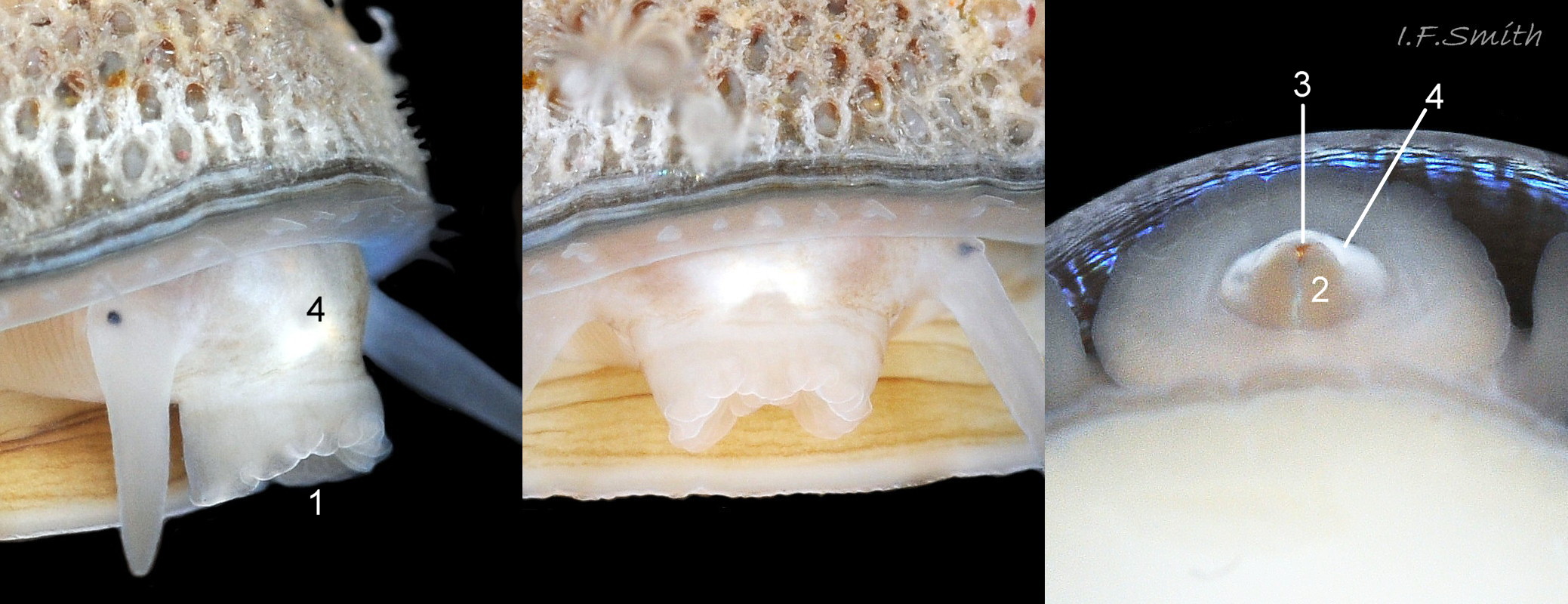The anterior wall of the buccal cavity is reinforced by a pliable, white, chitinous, antero-dorsal plate, called the “jaw” (4) though it is not articulated and does not bite.
The head has short stout snout with thick, white, wrinkled outer lips which extend the snout when protruded (1).
The odontophore is separated from the outer lips by dull orange inner lips that open laterally and close to a vertical line (2). When they open, the radula with rust-coloured, iron-rich teeth (3) is protruded through the arch of the opaque white jaw (4).
To feed, the strong muscles of the large odontophore thrust it forwards against the front of the buccal cavity which, reinforced by the jaw, restrains the odontophore but allows the front teeth to project strongly. The teeth effectively chisel into the tough frond or stipe of Laminaria, and the curve of the withdrawing teeth acts as a scoop to lift particles back to the oesophagus in the buccal cavity. The action is surrounded by the outer lips which prevent the escape of loosened food fragments.
Concise
Part 1, SHELL FORMS: 02 Patella pellucida. Growth Stage 2 (GS2). July 2012. Littoral. North Yorkshire, England. © P. Lightfoot.
Part 2, BODY & ANATOMY: 03 Patella pellucida. Growth Stage 3 (GS3). 2009. Sublittoral, Farne Islands, Northumberland, England. © P.Lightfoot.
Part, 3 HABITS & ECOLOGY: 04 Patella pellucida. Length 4.6mm. Growth Stage 3 (GS3). September 2016. Yorkshire, England. © P.Lightfoot.

